
MOLECULAR DIVERSITY
Scope & Guideline
Fostering Excellence in Molecular Research Since 1995
Introduction
Aims and Scopes
- Synthetic Chemistry:
The journal publishes extensive research on novel synthetic methodologies, including multi-component reactions, green chemistry approaches, and environmentally benign synthesis techniques. This includes the development of new reactions and catalysts aimed at improving the efficiency and sustainability of chemical processes. - Medicinal Chemistry:
Research articles often focus on the design, synthesis, and evaluation of new pharmaceutical compounds, particularly those targeting diseases such as cancer, tuberculosis, and viral infections. This includes structure-activity relationship (SAR) studies and the exploration of molecular mechanisms of action. - Computational Chemistry and Molecular Modeling:
The integration of computational methods, including molecular docking, molecular dynamics simulations, and quantitative structure-activity relationship (QSAR) modeling, is a prominent feature. This approach aids in understanding molecular interactions and predicting the activity of new compounds. - Natural Products and Pharmacognosy:
The journal highlights studies that investigate the bioactive potential of natural products and their derivatives, focusing on their roles as lead compounds in drug discovery. Research often involves isolation, characterization, and evaluation of pharmacological activities. - Targeted Drug Design and Repurposing:
A significant emphasis is placed on the design and identification of inhibitors targeting specific proteins involved in disease pathways, including drug repurposing strategies that utilize existing compounds for new therapeutic applications.
Trending and Emerging
- Artificial Intelligence and Machine Learning in Drug Discovery:
There is an increasing incorporation of AI and machine learning techniques to facilitate drug discovery processes. This includes predictive modeling for bioactivity, virtual screening, and optimizing synthetic routes, which represents a significant trend in modern medicinal chemistry. - Focus on Viral Infections:
Research targeting viral infections, particularly those related to COVID-19, has surged. This includes studies on drug repurposing, the design of antiviral agents, and understanding viral mechanisms, reflecting an urgent response to global health challenges. - Network Pharmacology:
The application of network pharmacology is gaining traction, emphasizing the understanding of complex biological interactions and pathways. This approach aids in identifying potential therapeutic targets and understanding the multi-target effects of compounds. - Sustainable and Green Chemistry Practices:
There is a marked increase in studies emphasizing sustainable synthesis and environmentally friendly methodologies. Researchers are focusing on reducing the environmental impact of chemical processes through innovative synthetic strategies. - Natural Product Derivatives:
The exploration of natural product derivatives continues to rise, particularly in the context of drug discovery. This includes the synthesis and evaluation of compounds derived from plants and marine sources, which are being investigated for their therapeutic potential.
Declining or Waning
- Traditional Synthetic Methods:
There is a noticeable decrease in studies focusing solely on conventional synthetic methods without the integration of advanced techniques or green chemistry principles. The trend is moving towards more innovative and sustainable approaches. - Basic Pharmacological Studies:
The journal has seen fewer articles that solely present basic pharmacological studies without a strong emphasis on molecular mechanisms or computational analysis. Research is increasingly expected to provide deeper insights into the mechanistic aspects of drug action. - Broad-Spectrum Antibacterial Agents:
Research on broad-spectrum antibacterial agents has become less frequent as the focus shifts towards more targeted therapies that address specific bacterial mechanisms of resistance, particularly in the context of rising antibiotic resistance. - Non-Computational Approaches:
There appears to be a decline in the publication of studies that do not incorporate computational methods. The integration of computational analyses is becoming a standard expectation in research, leading to fewer standalone experimental studies.
Similar Journals
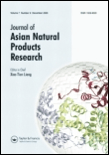
JOURNAL OF ASIAN NATURAL PRODUCTS RESEARCH
Bridging Cultures Through Natural Product ResearchJOURNAL OF ASIAN NATURAL PRODUCTS RESEARCH is a prestigious publication in the field of natural products, focusing on valuable research spanning analytical chemistry, pharmacology, and complementary medicine. Published by Taylor & Francis Ltd in the United Kingdom, this journal has established itself as a key resource for academics and professionals seeking to explore advancements in drug discovery and organic chemistry. With a converged publication timeline from 1998 to 2024, the journal boasts several commendable category quartiles as of 2023, reflecting its robust standing in the research community: Q2 in Complementary and Alternative Medicine, Q3 in multiple domains including Analytical Chemistry and Organic Chemistry, and Q4 in Molecular Medicine. Although it currently does not offer open access, the journal remains a valuable compendium for empirical research and innovative studies in areas such as pharmacology and medicinal chemistry. Researchers, professionals, and students alike will find the JOURNAL OF ASIAN NATURAL PRODUCTS RESEARCH to be an essential platform for sharing groundbreaking findings and fostering collaborations that lead to significant advancements in science and health.
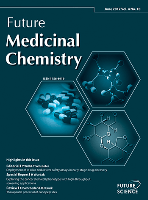
Future Medicinal Chemistry
Unveiling cutting-edge discoveries in medicinal chemistry.Future Medicinal Chemistry is a premier journal dedicated to the rapidly evolving fields of drug discovery, pharmacology, and molecular medicine. Published by Newlands Press Ltd in the United Kingdom, this journal has garnered significant attention within the academic community, evidenced by its 2023 category rankings in Scopus, placing it in the Q2 quartile for Drug Discovery and the Q3 quartiles for both Molecular Medicine and Pharmacology. With an ISSN of 1756-8919 and an E-ISSN of 1756-8927, Future Medicinal Chemistry has been a cornerstone of scholarly discourse since its inception in 2009, continuously contributing to the advancement of knowledge and discussion in medicinal chemistry. The journal is committed to publishing high-quality, peer-reviewed research that addresses the challenges and innovations in drug development and therapeutic strategies, making it an essential resource for researchers, professionals, and students seeking to stay at the forefront of these critical fields. Engage with the latest findings and methodologies that shape the future of medicine by exploring the wealth of information offered within Future Medicinal Chemistry.

REVUE ROUMAINE DE CHIMIE
Connecting Local Expertise to Global Chemistry ChallengesREVUE ROUMAINE DE CHIMIE is a distinguished academic journal in the field of chemistry, published by EDITURA ACAD ROMANE in Romania. With an ISSN of 0035-3930, this journal has been a valuable platform for disseminating original research and insights in the diverse realm of chemistry since its inception. The journal currently operates under a competitive tier, categorized in Q4 for miscellaneous chemistry fields, as reflected in its Scopus ranking of #348 out of 408, placing it within the 14th percentile. Aiming to foster scientific discourse and innovation, the REVUE ROUMAINE DE CHIMIE provides a repository of knowledge that is crucial for researchers, professionals, and students eager to advance their understanding and contribute to the global chemistry community. By bridging local and international research initiatives, this journal plays an essential role in enhancing the visibility of Romanian scientific contributions on the world stage.
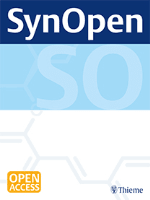
SynOpen
Exploring the Frontiers of Materials ScienceSynOpen is an esteemed open-access journal published by GEORG THIEME VERLAG KG, based in Germany, dedicated to advancing the fields of Biomaterials, Catalysis, Materials Science, and Organic Chemistry. Since its inception in 2017, the journal has established itself as a vital platform for researchers wishing to disseminate their findings in a rapidly evolving scientific landscape, earning a commendable Q2 ranking in Materials Science (miscellaneous) and Q3 in other key categories for 2023. With an increasing impact on its disciplines, SynOpen aims to foster interdisciplinary collaboration and innovation by providing unrestricted access to high-quality research, thus promoting a broader reach and visibility for authors. Scholars, professionals, and students alike can benefit from the comprehensive range of topics covered, as the journal's commitment to presenting cutting-edge studies and methodologies positions it as a crucial resource for contemporary scientific inquiry.

Heterocyclic Letters
Pioneering Discoveries in Medicinal and Agricultural ChemistryHeterocyclic Letters is an esteemed journal in the field of synthetic organic chemistry, published by RAMAN PUBL. With ISSN 2231-3087 and E-ISSN 2230-9632, this journal aims to disseminate original research and innovative findings related to heterocyclic compounds, which play a crucial role in medicinal chemistry, material science, and agricultural chemistry. Heterocyclic Letters provides a platform for researchers, professionals, and students to share their insights and advancements, thus fostering academic collaboration and knowledge transfer. The journal is dedicated to maintaining high-quality standards in research publication, making it an essential resource for anyone focused on the latest developments in heterocyclic chemistry. Although it does not currently offer Open Access options, the journal’s rigorous peer-review process ensures that only the most credible and impactful studies are published, contributing significantly to the advancement of the field.
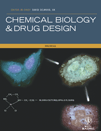
Chemical Biology & Drug Design
Transforming research into real-world health solutions.Chemical Biology & Drug Design, an esteemed publication by WILEY, serves as a vital platform for the dissemination of pioneering research in the interdisciplinary fields of biochemistry, drug discovery, molecular medicine, organic chemistry, and pharmacology. With a dedicated commitment to advancing the understanding of chemical interactions and drug development, this journal not only fosters innovation but also bridges the gap between theoretical research and practical applications. It boasts an impressive impact factor and is recognized in the 2023 category quartiles as Q3 in Biochemistry and Molecular Medicine, and Q2 in Drug Discovery, Organic Chemistry, and Pharmacology, indicating its relevance and influence in these crucial areas. The journal’s rankings across various Scopus categories further solidify its position as a reputable resource for researchers, professionals, and students striving to stay at the forefront of medicinal chemistry and drug design. While primarily traditional access-based, the journal's evolving scope from 2006 to 2024 ensures an ongoing contribution to essential scientific dialogue, making it an indispensable read for those committed to advancing health sciences.

RSC Medicinal Chemistry
Empowering Global Collaboration in Medicinal ChemistryRSC Medicinal Chemistry is a pivotal journal in the realm of medicinal chemistry, published by the esteemed Royal Society of Chemistry. With a focus on innovative research that intersects various disciplines such as biochemistry, drug discovery, pharmaceutical science, and organic chemistry, this journal serves as a vital resource for researchers, professionals, and students alike. Its impressive impact factor and notable rankings—positioning it within the Q1 and Q2 quartiles across critical categories—underscore its significance in advancing knowledge and fostering collaboration within the scientific community. RSC Medicinal Chemistry is dedicated to open access, ensuring that cutting-edge findings on drug design and therapeutic applications are freely available to enhance global research efforts. With a commitment to publication excellence from 2020 to 2024, it is a prominent platform where groundbreaking ideas meet practical implications, making it indispensable for anyone committed to the forefront of medicinal advances.
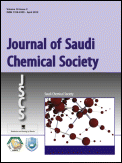
Journal of Saudi Chemical Society
Elevating Research Standards in the Chemistry Community.The Journal of Saudi Chemical Society, published by ELSEVIER, stands as a premier platform for advancing knowledge in the field of chemistry. Since its inception in 2009, this Open Access journal has garnered significant attention, securing a prestigious Q1 ranking in the Chemistry (miscellaneous) category for 2023, reflecting its position among the top journals in the discipline. With an impressive Scopus ranking of #66 out of 408 in General Chemistry, this journal boasts a commendable 83rd percentile, underscoring its impact and relevance in the global research community. The journal aims to disseminate high-quality research articles, reviews, and case studies, fostering innovation and collaboration among chemists and allied professionals. By enabling widespread access to cutting-edge research, the Journal of Saudi Chemical Society plays a crucial role in supporting the educational and professional development of students, researchers, and practitioners alike, making it an essential resource for anyone invested in the dynamic field of chemistry.

ACS Bio & Med Chem Au
Advancing the frontiers of biochemistry and medicinal chemistry.ACS Bio & Med Chem Au, published by the esteemed American Chemical Society, stands at the forefront of interdisciplinary research within the realms of biochemistry, drug discovery, pharmaceutical sciences, and molecular biology. With an impressive Impact Factor indicative of its rigorous academic standards and significant contributions to the field, this open-access journal is committed to disseminating high-quality research that drives innovation and advancements in biosciences and medicinal chemistry. Since its inception in 2021, the journal has rapidly earned recognition, achieving a commendable Q1 ranking in multiple categories, including Biochemistry, Drug Discovery, and Pharmaceutical Science, while also making strides in Molecular Biology. Researchers, professionals, and students alike can explore pioneering studies that bridge gaps between laboratory research and clinical applications, fostering collaborative efforts towards novel therapeutic strategies. With a focus on enhancing accessibility and engagement within the scientific community, ACS Bio & Med Chem Au is poised to impact the future of biomedical research significantly.
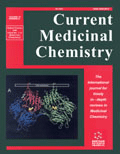
CURRENT MEDICINAL CHEMISTRY
Driving Progress in Chemical and Pharmaceutical Research.Current Medicinal Chemistry is a leading journal published by Bentham Science Publishers Ltd, known for its rigorous focus on the multifaceted realm of medicinal chemistry. With an ISSN of 0929-8673 and E-ISSN 1875-533X, the journal plays a crucial role in disseminating high-quality research findings that bridge the gap between chemistry and health sciences. Operating from Sharjah, United Arab Emirates, it has been a prominent scholarly resource since its inception in 1994, and is expected to continue until 2024. Current Medicinal Chemistry has earned its place in the academic community with an impressive impact factor and categorization in Q1 and Q2 quartiles across various disciplines, including Organic Chemistry, Biochemistry, Drug Discovery, and Pharmacology, highlighting its substantial contribution to these fields. Notably, it ranks 24th in Organic Chemistry and is within the 88th percentile, underscoring its appeal to researchers, professionals, and students alike who are keen on exploring cutting-edge advancements in drug design and development. Although it is not an open-access journal, it provides vital content that informs and inspires innovation in medicinal chemistry, appealing to a global audience committed to enhancing human health through scientific discovery.